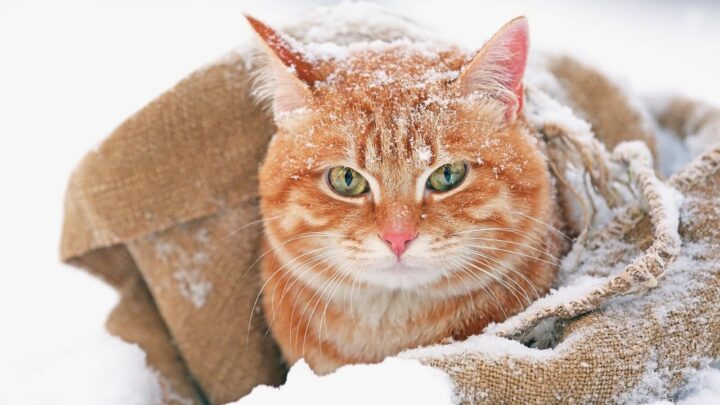If you are a cat lover – or just a decent human being – you may be concerned about your outdoor cats and the strays in your neighborhood when the temperatures start to drop.
Although cats have excellent survival skills and larger wild breeds may be accustomed to cold temperatures, cats can still develop hypothermia.
But how much cold can cats tolerate? After all, they do have fur to keep them warm.
And what signs should tell you that a cat feels cold? Well, you’ve come to the right place to learn about caring for cats when the temperatures begin to fall.
How Cold is Too Cold for Cats?
Once the temperatures drop down to 45 degrees Fahrenheit, cats should be brought indoors or offered alternative shelter from the cold, as they can develop hypothermia. However, the exact temperature that a cat can withstand varies on its age, coat, typical living environment, and health condition.
You can tell that a cat is feeling too cold when their heart rate is slow, they’re shivering, their breathing is shallow, and their pupils are dilated.

How Cold is Too Cold for Cats
How Cold is Too Cold for Cats
Cats Should Be Brought Indoors During Cold Weather
Generally, cats should be brought inside when the temperature dips below 45 degrees Fahrenheit, even though this isn’t technically considered freezing.
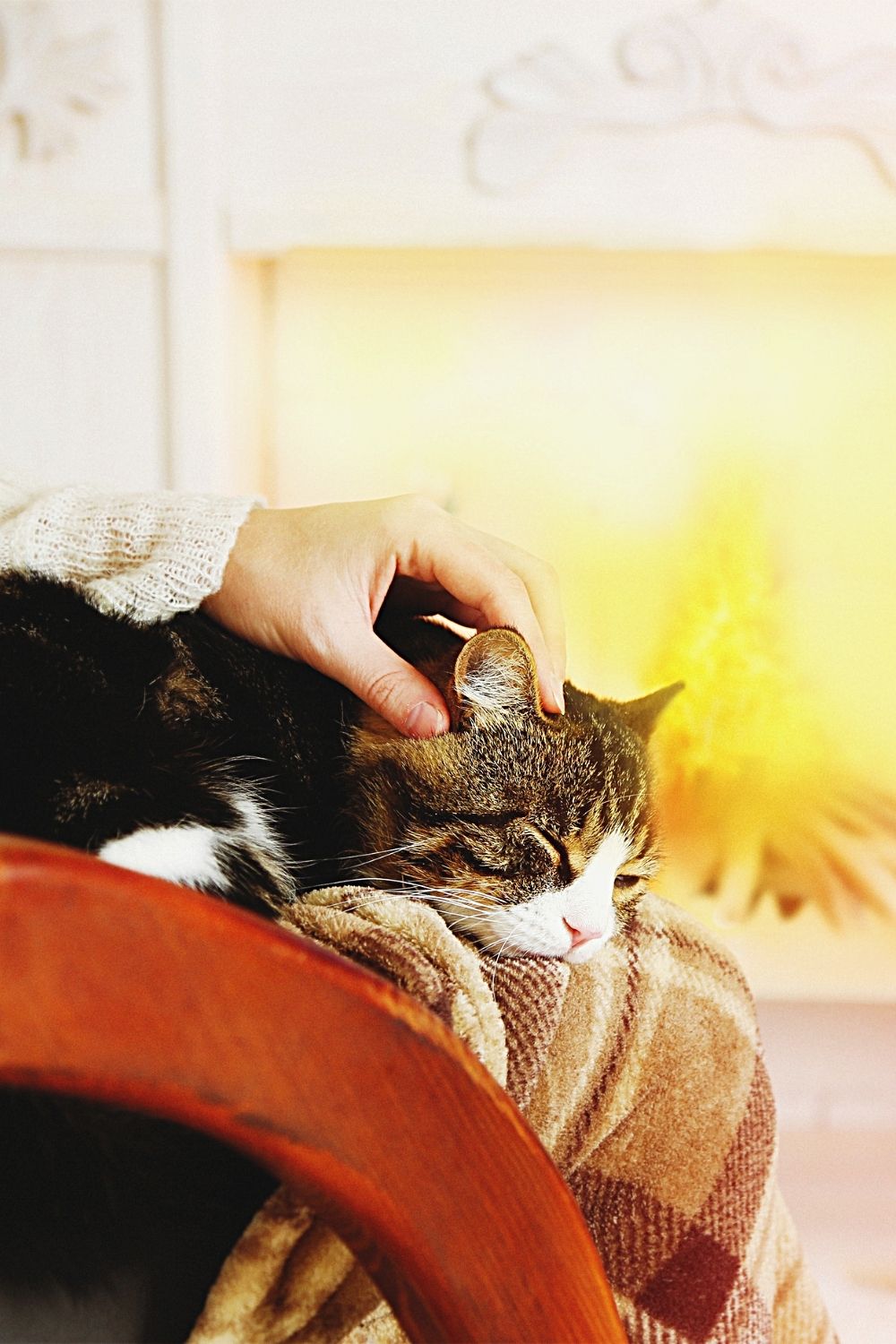
Bring your cats indoors once the temperature dips to 45 degrees Fahrenheit
Since the exact temperature that an individual cat can withstand relies upon many variables, your cat may be able to handle lower temperatures, but it’s best not to take that chance.
Indoor cats are even more vulnerable to colder temperatures as they have become accustomed to a temperature-regulated home, so lost cats are especially susceptible to hypothermia.
Indoor cats may start to feel too cold once the temperature lowers to 60 degrees Fahrenheit.
Most cats, though, are very independent and resilient, but even if your cat has no qualms about chasing a squirrel through four feet of snow, they should still be offered a source of warmth and shelter throughout the winter.
Factors that Affect a Cat’s Ability to Withstand the Cold
Not all cats are the same, so your cat may happen to enjoy cold weather – or be more susceptible to hypothermia.
Long-haired and overweight cats may be able to withstand colder temperatures, whereas hairless cats are known to start shivering even when kept inside.
Kittens are especially prone to hypothermia, as are cats with certain medical conditions.
Older cats are often more sensitive to cold weather as arthritis, which is common in senior cats, can be exacerbated when temperatures drop.
Cats that have darker-colored coats can usually handle cold weather better as their coat absorbs the warmth of the sun.
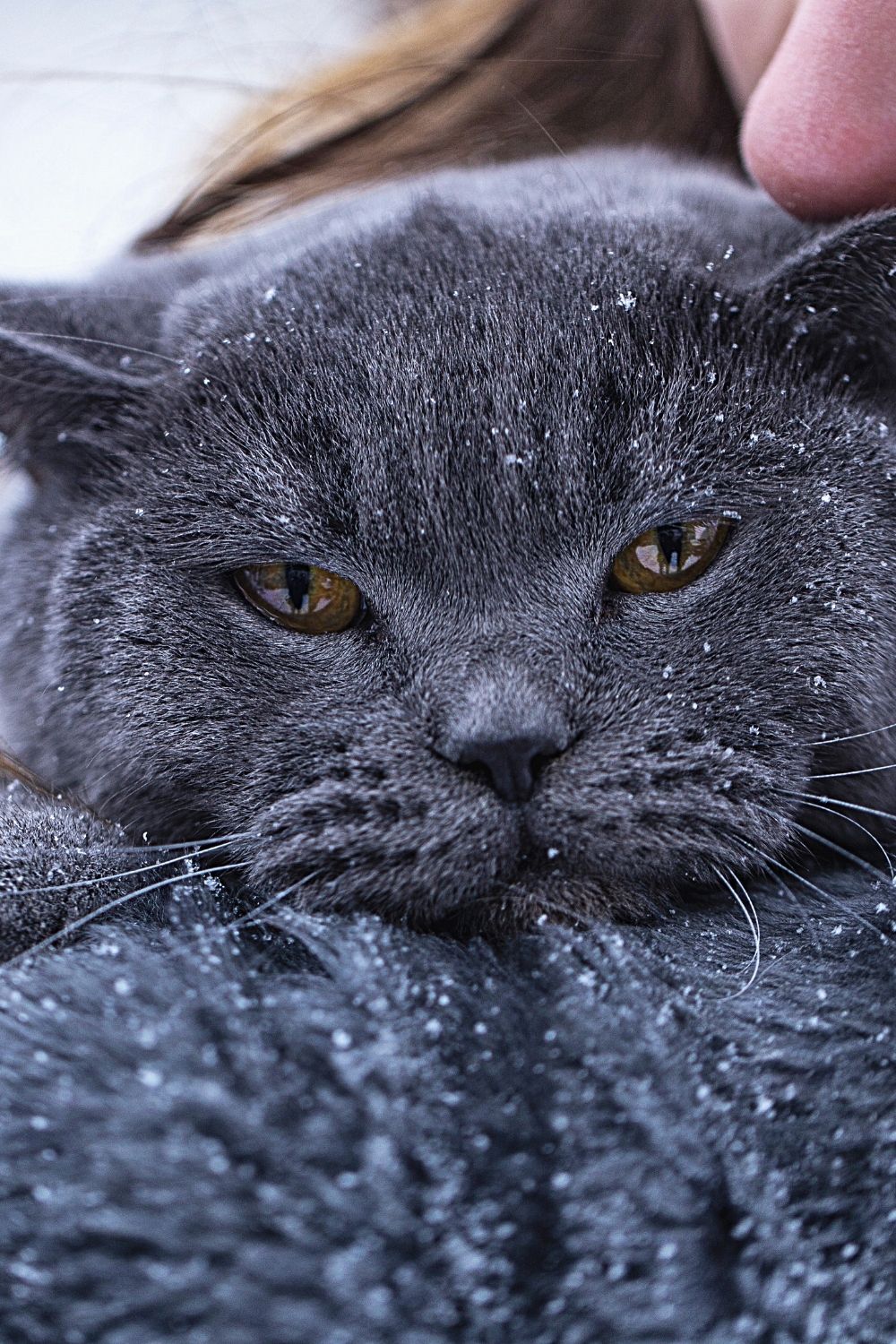
Cats with dark-colored coats handle cold temperatures better than their light-coated counterparts
If your cat has a serious medical condition, such as hypothyroidism or heart disease, they should never be allowed outdoors, regardless of the weather.
Signs that a Cat is Feeling Too Cold
Even the most loving cat owners can’t understand the word meow, so you need to pay attention to your cat’s body language to determine if they are feeling too cold.
If you simply notice that your cat is shivering, you can usually just bring them indoors and offer them warm blankets, but you also need to watch out for signs of hypothermia.
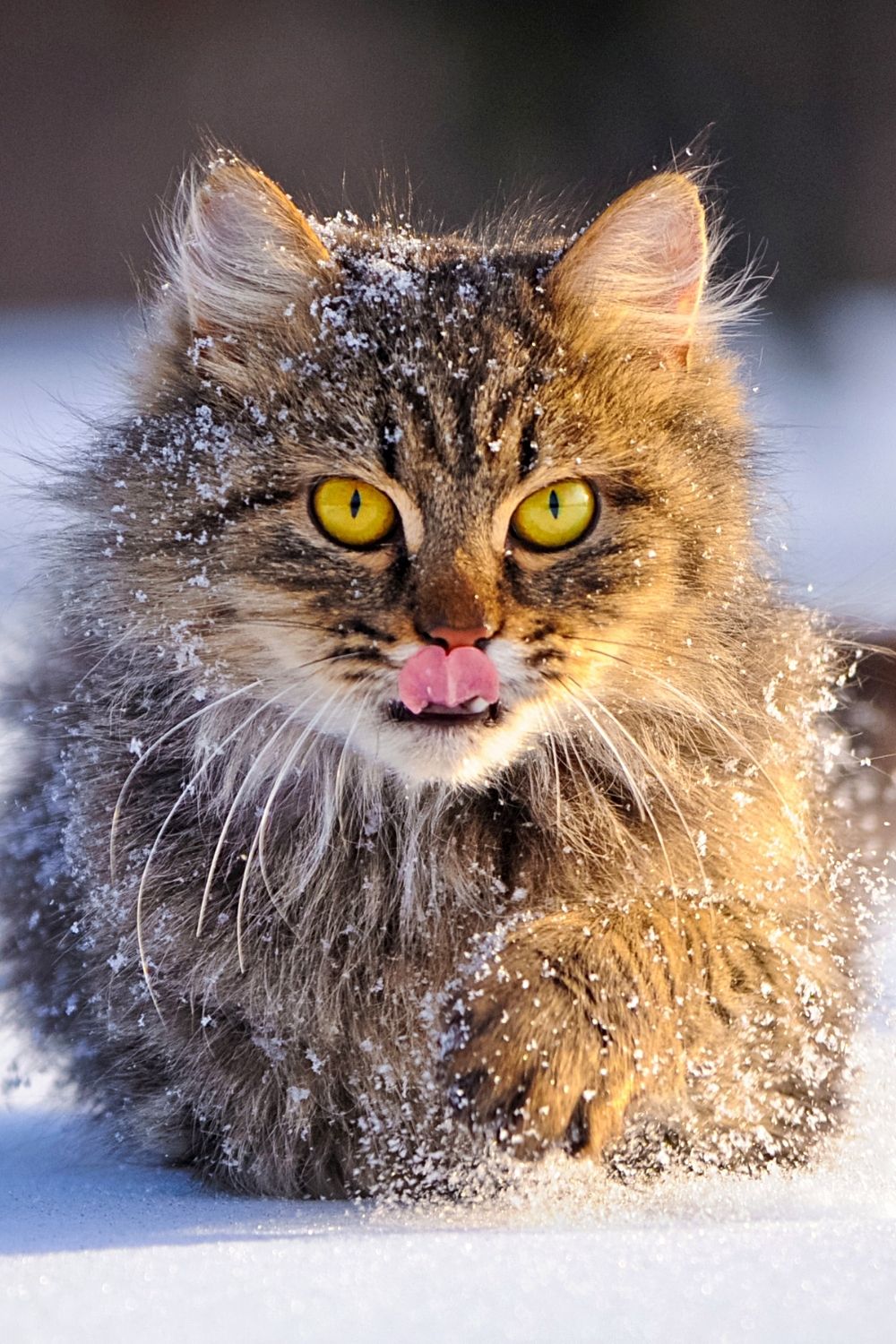
When you notice the cat shivering, bring it indoors and offer it warm blankets
If your cat seems unusually fatigued or their breathing is shallow, they could be suffering from hypothermia and need immediate veterinary attention.
Additional symptoms of hypothermia include delayed responses, dilated pupils, and a slower heart rate.
Hypothermia isn’t the only condition that cats can suffer from when exposed to cold temperatures. They are also subject to frostbite.
This most often occurs on their ears or paws but could affect any part of their body that’s been exposed to freezing temperatures for an extended period.
If you notice that your cat’s skin is discolored, dead, swollen, blistered, or brittle, you should make an emergency appointment with your veterinarian for prompt diagnosis and treatment.
How to Care for Stray Cats When the Weather is Cold
While you can simply bring your own cats indoors when it gets cold outside, you may feel compassion for the feral cats in your neighborhood that have no source of shelter.
Of course, it’s not plausible to bring stray cats into your home, and they’ll likely flee when you try to approach them.
Animal rescue organizations often relocate colonies of stray cats as they can survive independently and are usually too feral to be adopted, so options may be limited.
But a little bit of kindness can still go a long way in helping these unfortunate cats…
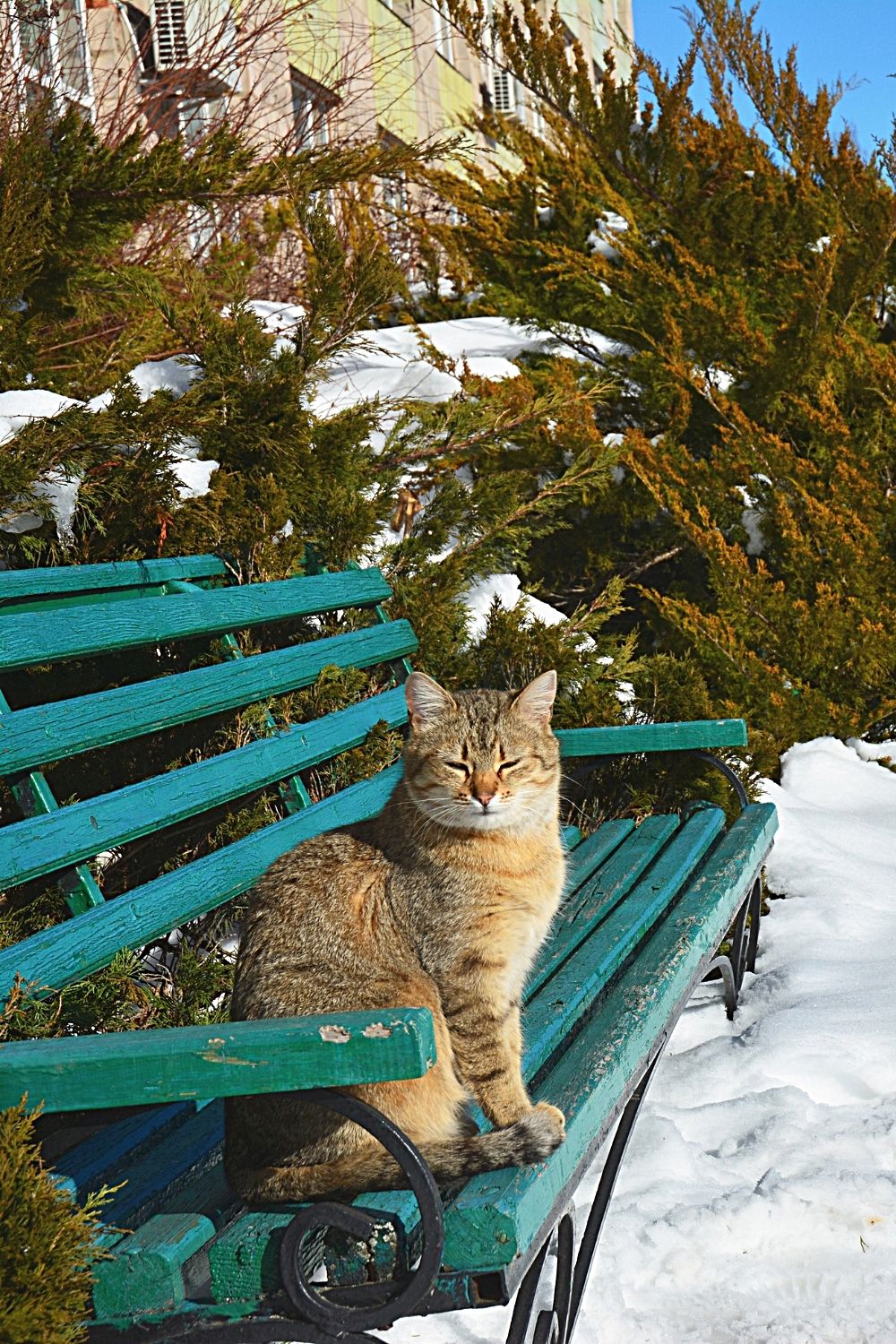
You can still show kindness to a stray or homeless cat to make it more comfortable during the cold months
If your local animal shelter is reluctant to get involved, you can build a makeshift shelter with blankets or a heated bed so that the feral cats in your neighborhood survive the winter months.
Of course, you should also leave out bowls of food and water near the cat shelter.
Even though they are just stray cats, it’s only decent to make sure they don’t freeze to death.
And, they may even show their appreciation come spring by taking care of any pest or rodent issues in your yard!
Frequently Asked Questions about How Cold is Too Cold for Cats
Is it cruel to keep a cat outside?
Although cats enjoy their independence, they are subject to the dangers of traffic and predators when left to roam outdoors. Outdoor cats may be reluctant to enter the house in harsh weather conditions. While it does depend on the owner’s preferences, cats are safest when kept indoors.
What do outdoor cats need?
Ideally, outdoor cats should still have a warm bed inside an enclosure and access to food and water. Many cat owners have a flap installed, so their cats can roam indoors and outdoors when they please, which usually works out well.
How hot is too hot for felines?
When temperatures spike over 90 degrees Fahrenheit, outdoor cats are subject to heatstroke. They need access to plenty of water and shade to stay hydrated and cool during hot weather.
Conclusion About How Cold is Too Cold for Cats
Even outdoor cats and strays can develop hypothermia from prolonged exposure to freezing temperatures, so it’s only humane to bring them inside or take safety measures when temperatures start to dip.
Although cats have superior survival skills, they are still not invincible and do need compassion from their owners, local cat lovers, and good neighbors to withstand harsh weather conditions.

